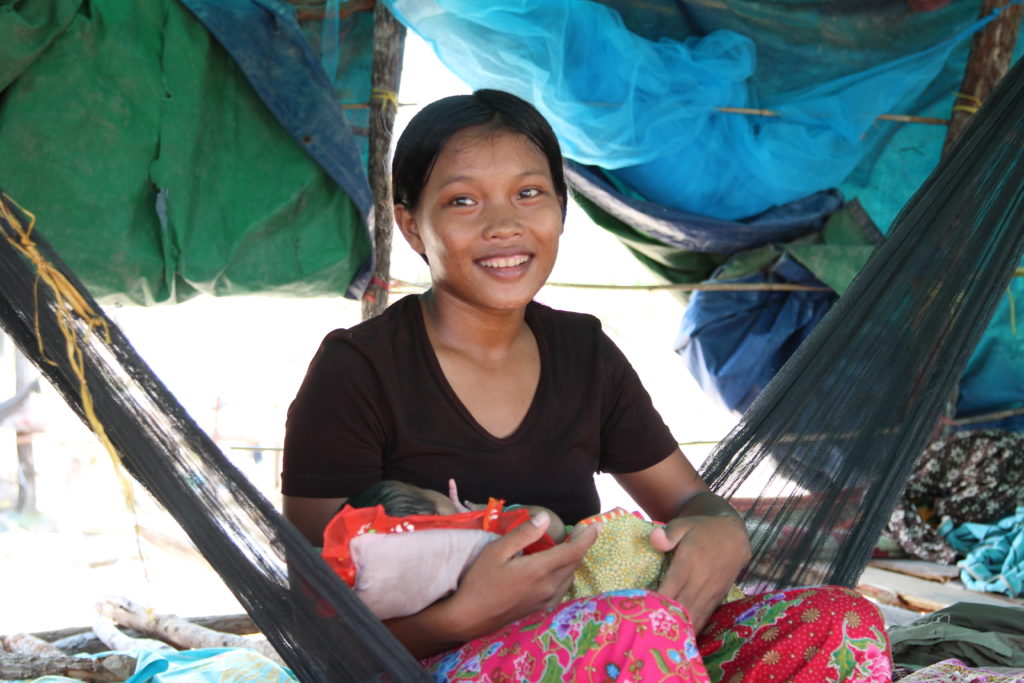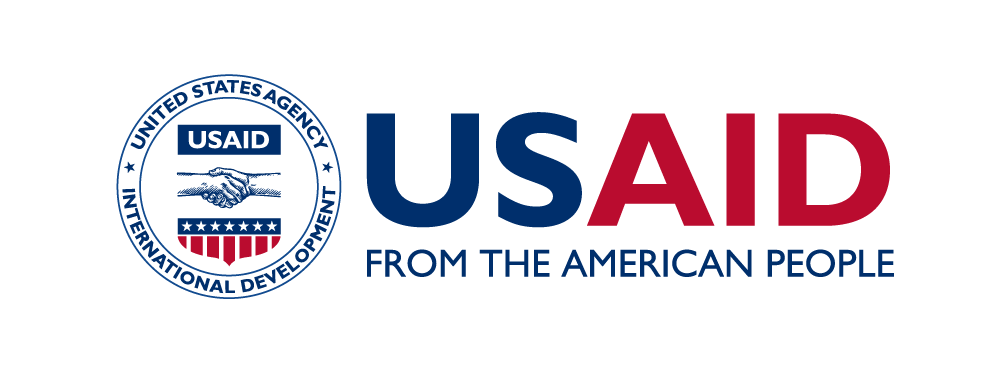Two decades of rapid economic growth has reduced the poverty rate in Cambodia by 64 percent, and maternal mortality by more than 75 percent. Despite this growth, household out-of-pocket spending on health accounts for over 60 percent of total health expenditures, leaving families at risk of falling into poverty due to a serious illness or extended hospitalization. The Royal Government of Cambodia (RGC) is committed to emulating its Southeast Asian neighbors by reforming and scaling up social protection programs to cover the entire population. Achieving universal health coverage (UHC) is a primary objective of the RGC’s social protection reforms.

A mother and child in Pursat Province, Cambodia.
© 2013 Lina Kharn/University Research Co., LLC, Courtesy of Photoshare
Coordinating Efforts to Achieve UHC
Several ministries within the RGC have been working to provide health insurance to different sectors of the population. However, the efforts are uncoordinated, allowing for duplication, unnecessary complexity, and waste that could have a negative impact on health system performance. In 2015, the RGC mandated that the Ministry of Economy and Finance (MoEF) oversee and coordinate the various reform efforts. While centralizing the coordination to one governmental body will streamline the process, the MoEF does not have expertise in health financing and requires training and capacity building to successfully design an integrated strategy for achieving UHC. HFG is working with the MoEF on these issues, and improving their ability to work more closely with other ministries on social health protection reforms.
The RGC currently dedicates only 1.5 percent of GDP to health care. International donor funding, which accounts for 20.2 percent of health funding in the country, is declining rapidly. It is critical that the MoEF, with assistance from the Ministry of Health (MoH), develops a health financing strategy that can be effectively implemented, scaled up, and sustained. HFG is developing health financing and UHC indicators and collecting baseline data to help the MoH and MoEF understand Cambodia’s current financing landscape, how it compares with other countries, and which UHC goals can be realistically achieved. The ministries will use the indicators to track progress on the goals and communicate the country’s health financing needs.
Building Expertise in Health Financing and Resource Needs
Through a series of workshops, HFG is building MoEF’s expertise in health financing by teaching ministry personnel about designing and governing social protection and health insurance programs. The project is also providing assistance to MoEF through targeted policy briefs to answer specific health financing questions. Improving MoEF’s expertise will increase the likelihood that Cambodia’s social protection reforms lead to a simpler, more efficient, and more comprehensive strategy for achieving UHC.
HFG is also conducting joint training sessions and workshops for the MoH and MoEF on improving the efficiency of health and disease spending. These sessions are helping to strengthen communication between the two ministries, creating a shared understanding of what resources are needed for the health sector, and identifying mechanisms for organizing and spending these resources more efficiently.
Conducting a National AIDS Spending Assessment
Cambodia faces resource constraints, such as a decline in donor funding, which will make achieving and sustaining its HIV and AIDS policy objectives difficult. The MoH must adapt to these constraints by designing and implementing new mechanisms for domestically financing HIV and AIDS. However, the MoH lacks the high-quality, up-to-date HIV expenditure information needed to inform a domestic resource mobilization strategy. HFG is assisting the MoH with collecting information on current HIV expenditures. This will better equip the MoH to generate additional domestic resources for HIV and AIDS through better-informed and targeted advocacy. The expenditure data can also be used to redesign policies that impact HIV and AIDS financing, service delivery, and outcomes.
Publications
- Cost of HIV and Tuberculosis Services at Health Facilities in Cambodia
- Landscape Analysis of Incentive Structures of Village and Mobile Malaria Workers in Cambodia
- HFG Rapid Assessment of TB Payment and PFM Systems in Cambodia: Lessons Learned and Policy Implications



